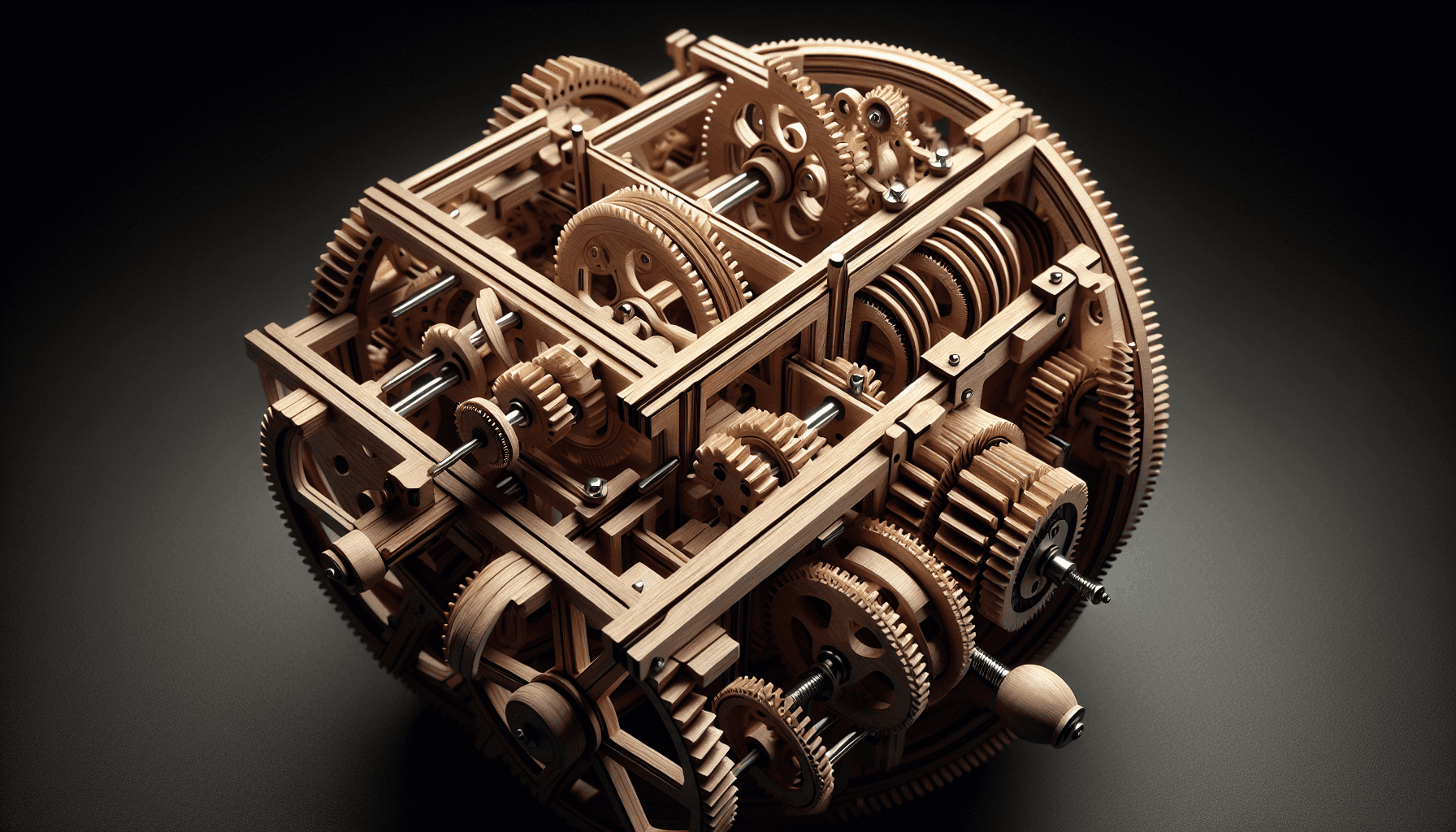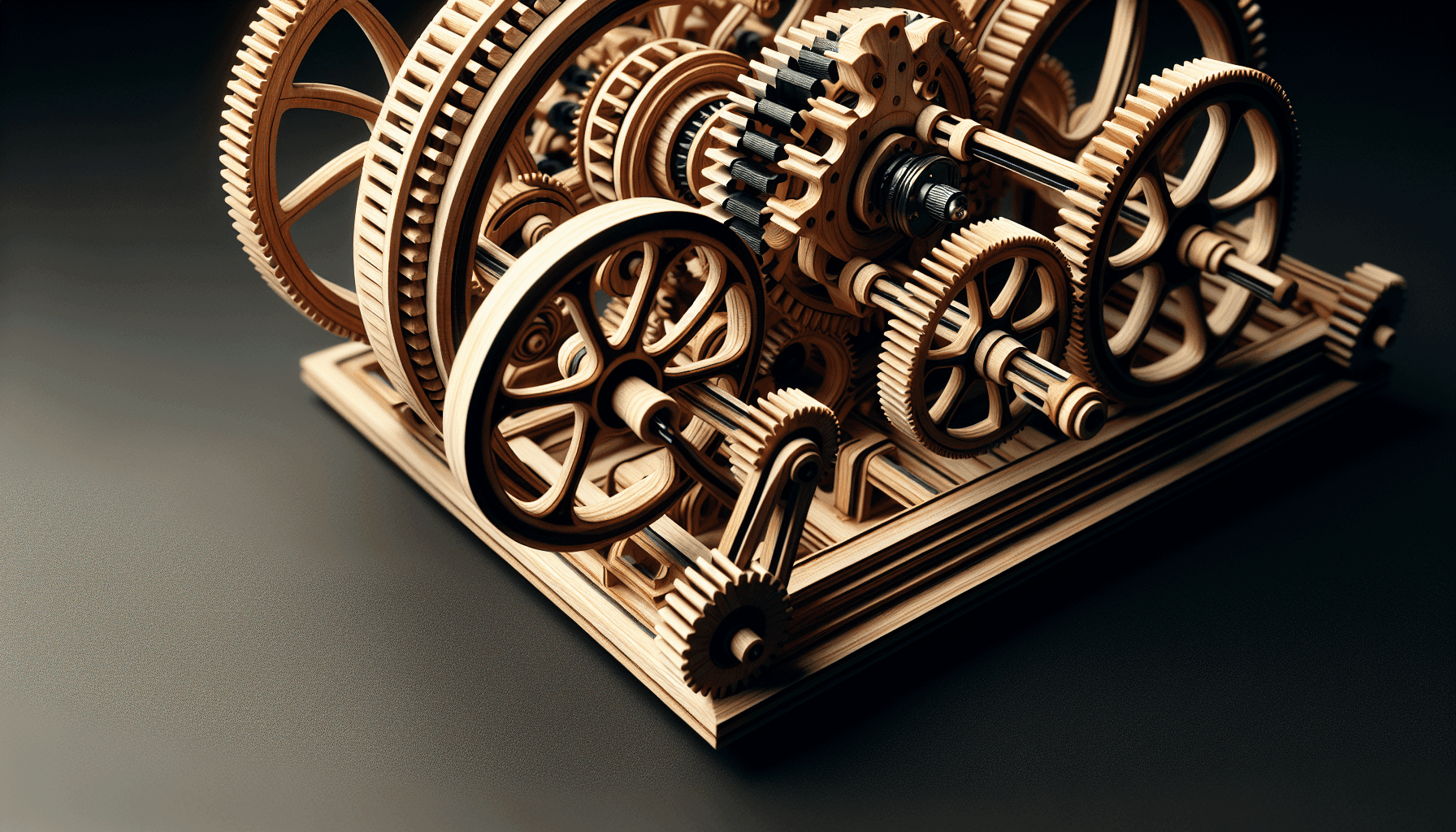Have you ever wondered how a beautifully intricate mechanical 3d wooden model operates without the aid of batteries? While modern technology often relies on batteries to bring models to life, these captivating models distinguish themselves through their reliance on old-world mechanics, marrying creativity with physics in a seamless way. In this detailed exploration, you’ll get to know the magic behind these mechanical wonders, particularly those made by brands like Robotime, Rokr, Ugears, Wood Trick, EWA, Vitascope, Wooden City, and Handmadecity.

The Concept Behind Mechanical 3D Wooden Models
Mechanical 3D wooden models are a unique take on puzzles and model-building. Unlike their traditional counterparts that may sit static on a shelf, these models are designed to move and function, bringing an extra dimension of intrigue.
No Batteries? No Problem!
The absence of batteries in these models may seem like a limitation at first glance. However, it’s actually a deliberate design choice that taps into the principles of mechanics. These models depend on complex gear systems, levers, and other mechanical elements to function, much like ancient machines or clocks.
How Do Mechanical 3D Wooden Models Work?
To understand how these models operate, let’s delve into the mechanical principles they leverage. Each component works in harmony to animate the models, making them an expressive fusion of art and engineering.
The Role of Mechanical Gears
One of the primary drivers of these models is the gear system. Gears are round wheels with teeth that interlock with other gears to transmit torque, a concept you’ve probably seen in mechanical clocks and watches.
- How Gears Work: When a lever or another motion-inducing mechanism—like a rubber band or spring—is engaged, it sets an adjacent gear in motion. This movement cascades through the gear network, animating the entire model in a chain reaction.
- Types of Gears: You’ll often encounter different types of gears in these models, such as spur gears, bevel gears, and worm gears, each bringing unique motion dynamics.
The Magic of Springs and Levers
Springs and levers are critical components that provide the power these models need to move. They store potential energy that can be released to perform work.
- Springs: A wound-up spring holds potential energy, which is released as kinetic energy when the spring unwinds. This release can drive gears, animate figures, or even move the whole model.
- Levers: A lever, on the other hand, can amplify the force applied to it, allowing a small input force to result in a much larger output force, perfect for intricate model designs.
The Art and Science of Model Assembly
Building these 3D puzzles is an art in itself, requiring precision, patience, and an understanding of how individual pieces contribute to the whole. Let’s explore what it takes to assemble these models.
Getting Started with Your Model Kit
When you first unbox a mechanical model kit, you’ll find sheets of pre-cut wooden pieces, each marked and ready to be assembled. Following the detailed instructions is key to a seamless build.
- Reading the Instructions: Every model kit comes with a manual that provides step-by-step guidance. It’s important to follow these instructions closely to ensure all parts fit correctly and the finished product functions as intended.
- Understanding the Parts: Familiarize yourself with the various pieces. Identifying gears, levers, and aesthetic components will streamline the assembly process.
Tools You Might Need
While these kits are designed to be user-friendly, a few additional tools can make the assembly process smoother and more precise.
| Tool | Purpose |
|---|---|
| Precision Knife | To carefully detach pieces from the boards without damaging them. |
| Sandpaper or File | To smooth edges and ensure snug fits between connecting pieces. |
| Small Hammer or Mallet | Useful for gently tapping pieces into place, ensuring they slot together securely. |
| Pliers | For bending or holding small pieces where fingers might not be enough. |
The Engineering Marvel: Designing 3D Wooden Models
The real beauty of 3D mechanical wooden models lies in their design. Let’s take a look at the principles that guide their creation, making them both functional and aesthetically pleasing.
From Concept to Creation
Designing these models requires an intricate balance between creativity and engineering principles. Designers must anticipate how each piece will interact with others, ensuring the end result moves as intended.
- CAD Software: Most designers work with advanced computer-aided design (CAD) software to plan and visualize models. This ensures elements align perfectly and operate efficiently.
- Prototyping: Before a model hits the shelves, multiple prototypes are tested. This phase irons out any mechanical quirks and ensures smooth, reliable operation.
Physics at Play
The successful operation of a mechanical model involves core physics principles like torque, tension, and gravity. Designers incorporate these principles to ensure a model’s motions are smooth and natural.
- Torque: Essential in gear systems, torque ensures that the energy input travels effectively through the model’s mechanical pathways.
- Tension: Used predominantly in spring-loaded parts to balance energy release.
- Gravity: Often exploited in levers and rolling mechanisms, utilizing the natural pull of gravity to create motion.

Popular Brands and Their Unique Styles
Different brands offer unique takes on 3D mechanical wooden models, providing a variety of themes and complexities to cater to different tastes and skill levels. Here’s a glimpse into some popular brands and what makes them special.
Robotime and Rokr
Known for detailed and intricate designs, Robotime and Rokr models tend to include elaborate gear systems and often exhibit thematic elements like vintage cars, clocks, or musical instruments.
Ugears
Ugears is famous for its complex mechanical models often themed around transport and architecture. Their kits are celebrated for incorporating steampunk aesthetics into functional models.
Wood Trick
Wood Trick embraces a blend of functionality and whimsy. Their models are often interactive, allowing users to engage with moving parts long after the build is complete.
EWA and Vitascope
EWA and Vitascope are recognized for providing accessible, beginner-friendly models. They offer a gentle introduction to more complex mechanical models, making them perfect for newcomers.
Wooden City and Handmadecity
Focusing on panoramic and urban-themed models, Wooden City and Handmadecity provide kits that often include elements familiar in cityscapes, such as famous landmarks or architectural marvels.
The Perks of Mechanical 3D Wooden Models
Why choose a mechanical 3D wooden model? Beyond their immediate beauty, these models offer lasting benefits that extend well beyond the building process.
Educational Value
These models are powerful educational tools, offering real-world applications of STEM (Science, Technology, Engineering, Math) concepts. As you build and interact with these models, you gain insights into mechanical principles and practical problem-solving.
Therapeutic and Relaxing
The act of assembling these models can be a therapeutic escape from daily pressures. Focusing on the intricate work allows you to remain present, offering a meditative, calming experience.
Long-term Enjoyment
Unlike typical static models, these wooden puzzles continue to offer enjoyment. Once built, you can marvel at their working mechanisms, enjoying the fruits of your labor.
Care and Maintenance of Wooden Models
To keep your wooden model in top condition, a little care can go a long way. Here are some simple maintenance tips.
Regular Cleaning
Dust and dirt can accumulate over time, affecting both aesthetics and function. Gently dust your model with a soft brush or dry cloth to maintain its pristine condition.
Avoid Moisture
Wooden models can warp or swell if exposed to moisture. Keep your model in a dry environment, away from direct sunlight and humidity.
Lubrication
If any mechanical part becomes stiff or squeaks, a tiny dab of suitable mechanical lubricant can restore smooth movement. Be cautious and avoid over-lubricating, as this may attract dust and dirt.
Conclusion: A Journey into Mechanical Mastery
Mechanical 3D wooden models invite you into a fascinating world where artistry meets engineering. Without the need for batteries, these models harness age-old mechanical principles to enthral and educate. As both a builder and an admirer, you engage in a process that sharpens the mind and offers an opportunity for creative expression. Who knew that something as simple as a wooden puzzle could transform into a dynamic exploration of movement and mechanics? Your journey with these models might just ignite a newfound appreciation for the intricate dance between physics and creativity.
Ready to start your 3D wooden puzzle journey? Click on any of the following links for our reviews:
All Categories | Boats | Clocks | Marble Runs | Musical Boxes | Musical Instruments | Puzzle Boxes | Trains | Trams | Trucks